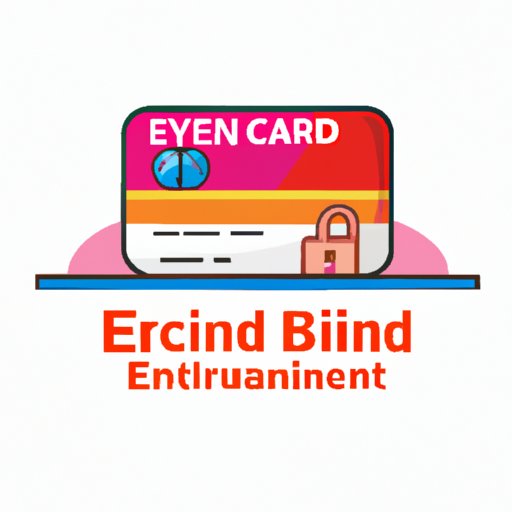Introduction
Establishing business credit is an important step in the process of starting and running a business. Having good business credit can be beneficial in a variety of ways, such as helping you secure financing, get better terms from suppliers, and even making it easier to rent office space or buy vehicles. In order to start building your business credit, there are several steps you must take.
Definition of Business Credit
Business credit is a type of credit that is specific to businesses. It is based on the financial health and creditworthiness of a business, rather than an individual. It is typically used to purchase goods and services, finance investments, or secure capital.

Overview of Steps Necessary to Establish Business Credit
In order to establish business credit, you must first establish a business entity and obtain an Employer Identification Number (EIN). You will then need to open a bank account in your business’s name and apply for a business credit card. You may also choose to become an authorized user on an existing business credit card, take out a small business loan, or utilize vendor lines of credit. The following sections will provide more detailed information about each of these steps.
Establish a Business Entity and Obtain an Employer Identification Number (EIN)
The first step in establishing business credit is to establish a business entity and obtain an EIN. This number is used by the Internal Revenue Service (IRS) to identify and track your business’s taxes and financial activities. It is also used by lenders and creditors when assessing your business’s creditworthiness.
Types of Business Entities
When establishing a business entity, you must decide which type of entity is best suited to your business. The most common types of business entities are sole proprietorships, partnerships, limited liability companies (LLC), and corporations. Each type of entity has its own advantages and disadvantages, so it is important to research them carefully before making a decision.
Steps to Obtaining an EIN
Once you have chosen a type of business entity, you must obtain an EIN. This can be done online through the IRS website, by mail, or by fax. The process is relatively simple and straightforward, and typically takes only a few minutes.
Open a Bank Account in Your Business’s Name
The next step in establishing business credit is to open a bank account in your business’s name. This is important because it allows you to separate your personal finances from your business finances, which makes it easier to track expenses and manage cash flow. It also helps to build your business credit, as banks use this information when assessing your creditworthiness.
Benefits of Opening a Business Bank Account
Opening a business bank account offers numerous benefits. It allows you to easily keep track of your business’s income and expenses, and can help to improve your credit score. It also helps to protect your personal assets from any potential legal action, as all of your business transactions will be conducted in the name of the business rather than in your own name.
Steps to Opening a Business Bank Account
Opening a business bank account is relatively simple. You will need to provide your business’s EIN, as well as other documentation such as proof of ownership and a copy of your business license. You will also need to make a deposit into the account, which will serve as your initial balance.

Apply for a Business Credit Card
Applying for a business credit card is another important step in establishing business credit. A business credit card can be used to make purchases, pay bills, and access funds quickly. It can also help to improve your credit score, as long as you make timely payments.
Types of Business Credit Cards
There are a variety of business credit cards available, so it is important to research them carefully before deciding which one is right for your business. Some cards offer rewards, while others offer low interest rates or no annual fee. Different cards also have different eligibility requirements, so it is important to read the fine print before applying.
Factors That Impact Approval
When applying for a business credit card, there are several factors that can impact whether or not you are approved. These include your credit history, the amount of money you have in savings, and the financial health of your business. It is important to make sure you meet the criteria outlined by the card issuer before submitting your application.
Steps to Applying for a Business Credit Card
The process of applying for a business credit card is similar to that of applying for a personal credit card. You will need to provide your business’s EIN, as well as other information such as your annual revenue and the number of employees in your business. You may also need to provide a copy of your business plan and financial statements.
Become an Authorized User on an Existing Business Credit Card
Another option for establishing business credit is to become an authorized user on an existing business credit card. As an authorized user, you will be able to use the card to make purchases, but you will not be responsible for paying off the balance. This can be beneficial if you do not yet have the credit history or financial resources to qualify for a business credit card.
Benefits of Becoming an Authorized User
Becoming an authorized user on an existing business credit card can be beneficial in a variety of ways. It can help to build your business credit, as your activity will be reported to the credit bureaus. It can also help you save money, as you will not be responsible for paying off the balance.
Steps to Becoming an Authorized User
To become an authorized user on an existing business credit card, you must first find a cardholder who is willing to add you as an authorized user. You will then need to provide your personal information, including your name, address, and Social Security number. Once you have been added as an authorized user, you will be able to use the card to make purchases.

Take Out a Small Business Loan
Taking out a small business loan is another way to establish business credit. Business loans can be used to finance investments or cover operational costs, and they typically have lower interest rates than other types of financing. However, they can also be difficult to obtain, as lenders often require extensive documentation and may require collateral.
Types of Small Business Loans
There are a variety of small business loans available, so it is important to research them carefully before deciding which one is right for your business. Some of the most common types of business loans include SBA loans, term loans, and merchant cash advances. Each type of loan has its own advantages and disadvantages, so it is important to understand the differences before making a decision.
Factors That Impact Approval
When applying for a small business loan, there are several factors that can impact whether or not you are approved. These include your credit history, the amount of money you have in savings, and the financial health of your business. Lenders will also consider the purpose of the loan and the amount of collateral you can provide.
Steps to Taking Out a Small Business Loan
The process of taking out a small business loan is similar to that of taking out a personal loan. You will need to provide your business’s EIN, as well as other information such as your annual revenue and the number of employees in your business. You may also need to provide a copy of your business plan and financial statements.
Utilize Vendor Lines of Credit
Vendor lines of credit are another option for establishing business credit. These lines of credit are provided by vendors, and they can be used to purchase goods and services from those vendors. They are typically easier to obtain than traditional business loans, as they are based on the relationship between the vendor and the customer rather than the customer’s creditworthiness.
Benefits of Utilizing Vendor Lines of Credit
Utilizing vendor lines of credit can be beneficial in a variety of ways. It can help to build your business credit, as your activity will be reported to the credit bureaus. It can also help you save money, as you will not have to pay interest on the line of credit until you draw funds from it.
Steps to Utilizing Vendor Lines of Credit
The process of utilizing vendor lines of credit is relatively simple. You will need to contact the vendor and request a line of credit. The vendor will then review your credit history and financial situation, and may require additional documentation such as a business plan or financial statements. If approved, you will be able to access the line of credit whenever you need it.
Conclusion
Establishing business credit is an important step in the process of starting and running a business. There are a variety of steps you can take to establish business credit, such as establishing a business entity and obtaining an EIN, opening a bank account in your business’s name, applying for a business credit card, becoming an authorized user on an existing business credit card, taking out a small business loan, and utilizing vendor lines of credit. By taking these steps, you can start to build your business credit and gain access to the financing you need to grow your business.
(Note: Is this article not meeting your expectations? Do you have knowledge or insights to share? Unlock new opportunities and expand your reach by joining our authors team. Click Registration to join us and share your expertise with our readers.)
